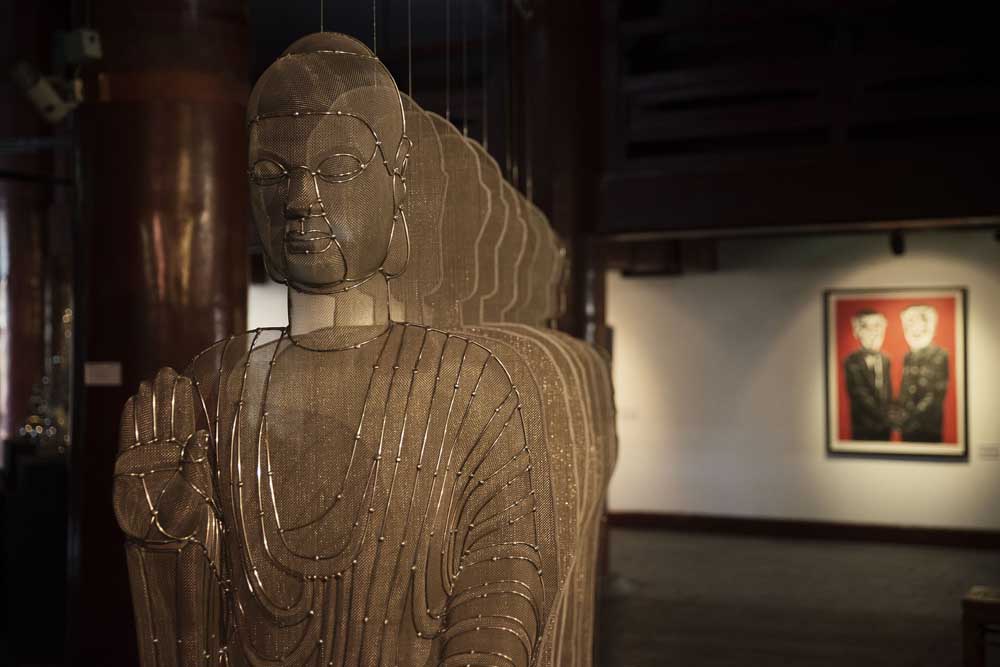Beijing’s art scene raises its profile
Published 12:00 am Sunday, January 11, 2015

- Gilles Sabrie / New York Times News ServiceA stainless steel sculpture by Shi Zhongyin is displayed at the Red Gate galley in Beijing.
On a recent Sunday afternoon in the sunken terrace of Beijing’s sleek Opposite House Hotel, an art event was in full swing. The wine was chilling, the dumplings were steaming, and a few dozen locals and foreigners were looking on with curiosity as artists Yan Wei and Yinmai O’Connor ran their black paintbrushes over the walls, furniture and even the human occupants of a whitewashed room.
The event was put on by Surge Art and was its third in three days. The turnout seemed reasonable, although Tom Pattinson, Surge’s director, told me it had nothing on the party they held the previous Friday night at the Four Seasons Hotel.
Trending
Casual art events such as this one are gaining traction in Beijing: Emerging artists who were previously overshadowed by the country’s high-end art stars are increasingly being given more of a platform by galleries and dealerships.
The target market is twofold: the new generation of high-salaried Chinese professionals who are turning more toward contemporary artworks than designer trinkets, and foreign visitors for whom a painting by a hot young artist is the ultimate souvenir from the country’s capital.
Surge is among a growing number of businesses in Beijing boosting the market for works by emerging artists. Others include the Hi Art Store — another online outlet — as well as institutions including the UCCA (Ullens Center for Contemporary Art) store in the 798 Art District, which also sells limited-edition prints online, and some of the more trailblazing galleries such as Red Gate.
“Buying a work of contemporary Chinese art is buying a little piece of history and a window into how society is changing,” said Pattinson.
Beijing’s art scene has become a staple destination on the sightseeing itinerary. Companies including Bespoke Beijing and Context Travel have been leading walking tours through the 798 gallery district in the northeast of the city for several years and setting up studio visits to meet and greet artists. What was a small, alternative scene there has flourished.
Artwork bought online starts at about $75, making it a tempting foray for a souvenir hunter with no previous aspirations of art collecting.
Trending
Janice MacLeod, a 76-year-old social worker from England, was one such unassuming buyer first exposed to Chinese contemporary art at one of Surge’s art fairs, while visiting her son, a journalist, in Beijing in 2013.
“I was blown away by the exhibition, got wonderfully carried away and bought my first piece of contemporary art,” she said, referring to the painting “Chinese Cabbage” by Ma Jing, which now hangs in her Oxfordshire cottage.
Other buyers are also entertaining the possibility of some return on their vacation purchase: One potential benefit of buying art in China over a souvenir porcelain tea set is that the art is more likely to appreciate a few years down the line.








